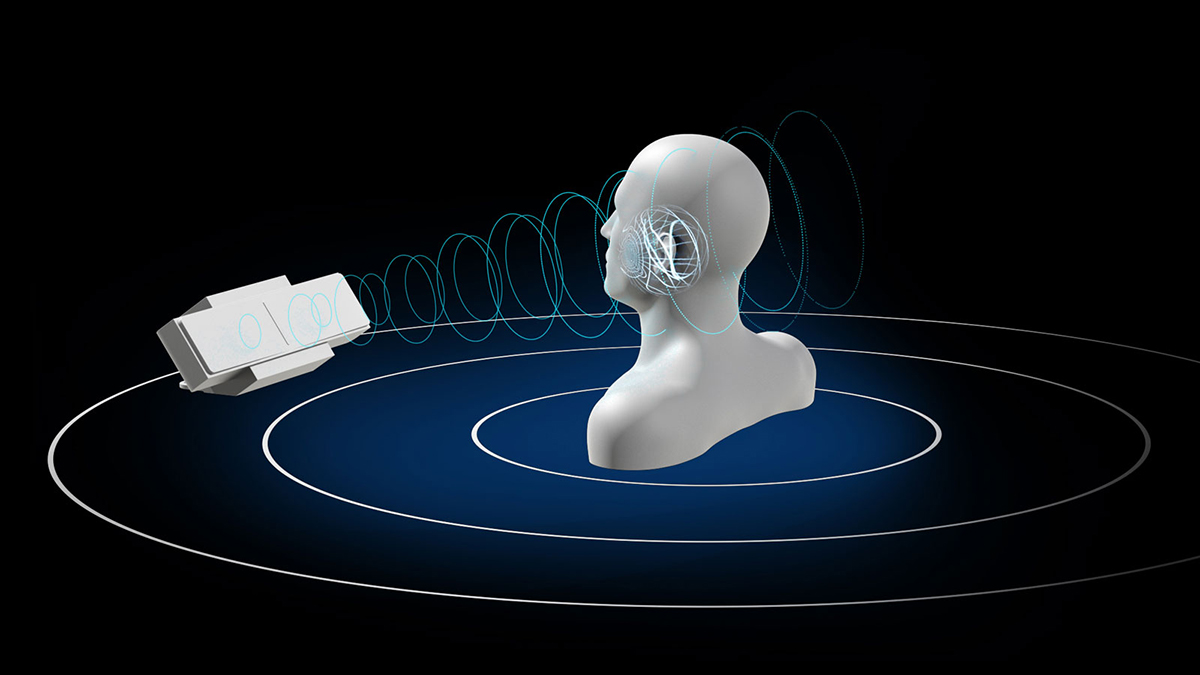
Welcome to a journey into the realm of sound innovation that promises to reshape our audio experiences – SoundBeaming Technology. In this blog, we will delve deep into the hidden gems of this revolutionary technology, exploring how it functions, its potential applications, and the impact it could have on our lives.
Unveiling SoundBeaming: How It Works
SoundBeaming is a cutting-edge technology that transcends the limits of traditional audio delivery systems. At its core lies the ability to transmit sound directly to a listener’s ears without the need for headphones or speakers. This is achieved through the use of ultrasonic waves that create focused, narrow beams of sound. These waves are carefully manipulated to create pockets of audible sound that are perceptible only within specific zones. By targeting these beams, SoundBeaming ensures that sound is heard clearly and exclusively by the intended listener.
The Technology’s Hidden Gem: Applications Beyond Audio
While the primary application of SoundBeaming is undoubtedly enhancing audio experiences, its potential goes far beyond that. Imagine a museum where each exhibit has its own soundscape, enriching visitors’ understanding of the artifacts. This technology could be a game-changer for individuals with hearing impairments, offering them personalized audio without the need for cumbersome devices. Additionally, it could revolutionize how we interact with entertainment systems, providing an immersive experience without disturbing those around us.
Diving into the Mechanics: How SoundBeaming Operates
To comprehend the mechanics behind SoundBeaming, let’s consider the essential components:
Transducer Arrays: These arrays generate ultrasonic waves that serve as carriers for the audible sound. They work in tandem to create focused beams.
Wave Manipulation: The frequencies and phases of the ultrasonic waves are carefully adjusted to create “sound pockets” in the air. These pockets contain the intended audio.
Spatial Tracking: Advanced sensors track the listener’s position, ensuring that the sound beams are directed accurately to their ears.
Personalization: SoundBeaming technology can be calibrated for individual preferences, adjusting the sound direction and intensity according to the listener’s unique requirements.
Hidden Gems of Personalization and Accessibility
One of the hidden gems of SoundBeaming is its potential for personalization. Imagine walking into a café and hearing your favorite tunes while your friend listens to a podcast – all without disturbing the ambiance. Moreover, this technology could offer a lifeline for individuals with specific audio needs. For instance, it could provide tailored language lessons or audio therapy for cognitive health.
Exploring the Challenges: What Lies Ahead
As with any groundbreaking technology, SoundBeaming does present challenges. Ensuring seamless spatial tracking and optimizing beam precision are critical to its success. Moreover, the safety of ultrasonic waves and potential interference with other technologies must be thoroughly addressed.
Unmasking the Future: SoundBeaming’s Potential Impact
SoundBeaming technology has the potential to redefine how we perceive and interact with sound. It could transform public spaces, making silent discos a reality and personalizing audio experiences in cafes, airports, and even libraries. Moreover, it could lead to a more inclusive society, offering tailored audio solutions for individuals with different needs.
Final Words
In conclusion, SoundBeaming technology offers a tantalizing glimpse into the future of audio experiences. Its ability to transmit sound directly to listeners has the potential to revolutionize everything from entertainment to accessibility. As the technology continues to evolve, we can look forward to a world where audio is not only heard but experienced in an entirely new way.
Commonly Asked Questions
Q1: Is SoundBeaming safe for prolonged exposure?
A1: Yes, extensive research is being conducted to ensure that ultrasonic waves used in SoundBeaming technology are safe for long-term exposure. Stringent safety standards are being followed in its development.
Q2: Can SoundBeaming replace traditional headphones?
A2: SoundBeaming provides an alternative to headphones, offering a more personalized and immersive audio experience. However, its adoption may depend on individual preferences.
Q3: How accurate is the spatial tracking of SoundBeaming?
A3: The spatial tracking of SoundBeaming is remarkably accurate, thanks to advanced sensors that precisely direct the sound beams to the listener’s ears.
Q4: Can SoundBeaming be used outdoors?
A4: Yes, SoundBeaming can be adapted for outdoor use. However, challenges like ambient noise and wind resistance need to be addressed for optimal performance.
Q5: Will SoundBeaming make traditional speakers obsolete?
A5: While SoundBeaming offers unique benefits, traditional speakers will likely continue to have their place. Each technology has its strengths and applications.












